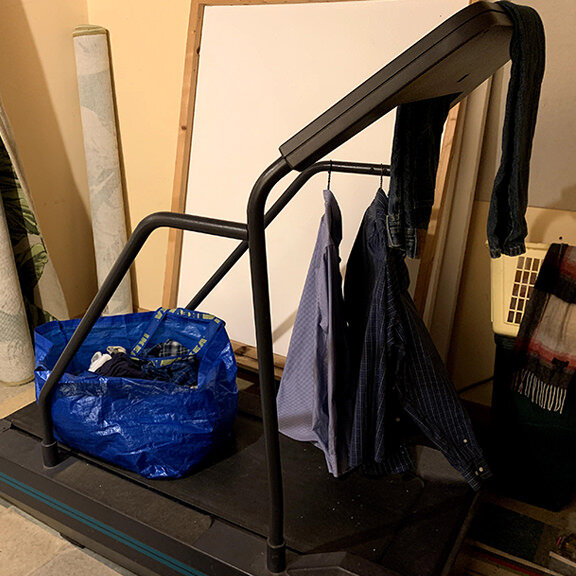Changing Habits Takes Time
We make a big deal out of asking old guys who have been soap and water guys their whole life to change their habits just a little. Less than a minute, we say. Easy enough, right?
Well, not so fast. It’s actually a whole lot easier teaching a real old dog new tricks than it is to make even the smallest change to your daily habits.
The landscape is littered with best intentions. How many treadmills, steppers, and the like have you seen ‘for sale’ on the side of the road?
This blog is a guilt-free zone. There is a reason why some succeed while others don’t, and it has nothing to do with desire. The key is to repeat something new enough times so that it becomes automatic. And yes, we would love for you to make applying Dew It!™ and Soak It Up!™ an automatic part of your day.
Treadmills
Back in the day, I had a treadmill company as a client. It was a premium brand, and the treadmills cost thousands of dollars. Meanwhile, there were many competitor treadmills that cost only hundreds of dollars and seemed to offer many of the same benefits on paper. How could they be so cheap? That’s when I learned that most of those cheaper brands are built to last 3 months. The data showed that the vast majority of people won’t last 3 months before they give up. They knew that even with the best of intentions, it takes at least two to three months of consistent exercise to make it a part of a daily routine. So the buyers, when they quit, would be none the wiser that they bought something that would only last a short time.
Now adding a less-than-a-minute step to a cleansing routine — one that is joyful, refreshing, and just plain awesome — should be a lot easier to incorporate into a daily rhythm than walking or jogging on a treadmill for half an hour a day.
Easier, yes, but still not a given. (And no, we don’t expect bottles of Old Guy Skincare to be found at garage sales next to those coat hanger treadmills.)
The Magic Number 66
Luckily for us, there is a study that answers the burning question of how long it takes to establish behavior that becomes automatic.
Conducted by a team from University College London this study examined a number of habits that ranged in difficulty: from eating fruit daily to jogging to learning Chinese. What they found on the “duh” scale was that the harder the task, the longer it took to make it automatic. Drinking water daily was easier to make a part of your daily routine than doing sit-ups. Duh.
The researchers charted all of the activities, with the two axes being number-of-days and automaticity. The more automatic the behavior becomes, the higher up the automaticity scale. Eventually, people plateau on their automaticity, and that’s when the number of days is calculated. It turns out the time to reach automaticity ranged from 18 to 254 days.
The big ‘aha’ moment was discovering that the average time it takes to really make something stick is 66 days.
And just in case you’re worried about what happens if you miss a day, don’t be. You can miss days, just not many in a row, or too many.
The real burning question
So how many days in a row do you need until Dew It! and Soak It Up! becomes an automatic part of your daily routine?
We are guessing somewhere between 18 and 254 days. And we’ve got the data to prove it.

